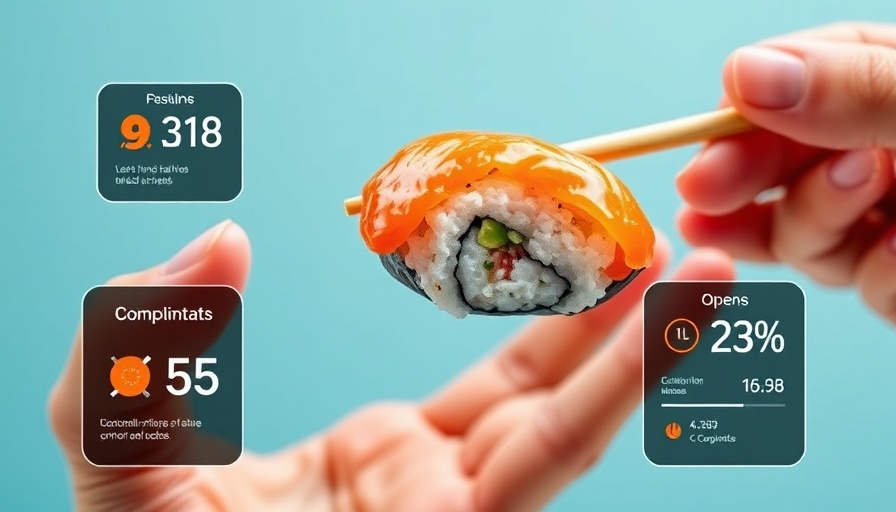
Why Image-Only Emails Might Leave Your Marketing Strategy Hanging
Imagine this: you open an email from your favorite online store, but all you see is a bewildering array of images. No text, just pictures. You squint at your screen, trying to figure out if there’s a message buried somewhere in that sea of visuals. This baffling scenario is exactly what many subscribers experience when they encounter image-only emails. While on the surface, these emails seem appealing, the reality is often a complicated mess of deliverability issues and poor user experiences.
The Allure of Image-Only Emails: Convenience Versus Engagement
In an era where speed and efficiency are paramount, it’s easy to understand why marketers lean towards image-heavy emails. According to email marketing experts, sending an image-only email allows for quick turnaround and an aesthetically pleasing design. Tabish Bhimani, a strategist in digital marketing, notes that organizations can get emails out faster, especially in competitive fields like real estate. But this agility comes with significant trade-offs. If images won’t display due to subscriber settings or slow internet connections, you may as well have sent a blank page. Email recipients often have their images blocked, which leads to a poor engagement experience and potential fallout for brands.
Accessibility: The Blind Spot of Image-Only Emails
When we talk about marketing strategies, we must consider all audience members, including those who may have visual impairments. This is where image-only emails stumble dramatically. Emails made up entirely of images can be inaccessible for screen readers, leaving many visually-impaired subscribers without any valuable content. If we want to uphold inclusivity in our marketing efforts, our emails must contain live text that screen readers can interpret. Disregarding this principle can alienate a chunk of your audience, and nobody wants that!
The Mobile Experience: Does Your Email Pass the Test?
With smartphone usage skyrocketing, how do image-only emails fare on mobile devices? Poorly! Images can either become distorted or too small to read, leading to frustrations rather than conversions. In fact, designing emails solely with images can make it laborious to optimize for multiple screen sizes. Many marketers overlook this when choosing to rely heavily on images for their emails. If your marketing emails aren’t user-friendly on mobile, you’re missing a significant opportunity for engagement.
Deliverability: In the Danger Zone
Image-only emails also risk landing in the dreaded spam folder. Traditionally, image-heavy emails raised a red flag for spam filters since scammers often shunned text to avoid detection. While spam filters have become increasingly sophisticated, maintaining a balance between text and images is crucial for enhancing deliverability. By minimizing the reliance on images and incorporating more text, your emails have a better shot at reaching the target inbox.
Best Practices: A Perfect Blend of Text and Images
So, what’s the secret sauce for creating compelling emails? Marketing experts recommend a text-to-image ratio of roughly 60/40. Utilize HTML text that can be indexed for SEO and allows for easy searches—this is key to making your emails more accessible and impactful. Here are a few best practices:
- Use Live Text: Always prioritize live text over text confined to images. This ensures your email remains SEO-friendly and accessible.
- Bulletproof Buttons: Create buttons with HTML for calls to action instead of relying on image buttons which may not load properly.
- Alt Text: Don’t forget to include ALT text descriptions for all images to enhance accessibility and provide context in case images don’t load.
- Optimize Image Size: Use tools to compress images and reduce loading times—this keeps subscribers engaged!
Engagement: The Core of Successful Email Marketing
Your primary objective as an email marketer is to engage your audience. Emails need to resonate with recipients and prompt actions—whether it’s making a purchase, clicking a link, or sharing with friends. Image-only emails fall short of this goal by diluting the message and risking disengagement.
Conclusion: Striking a Balance for Better Results
When crafting your email marketing strategy, remember that balance is crucial. While images certainly have their place, don’t forsake the fundamentals of effective communication in favor of visual allure. By avoiding the pitfalls of image-only emails and following best practices, you can create beautiful, engaging, and accessible campaigns that promote better reader experiences while driving your marketing objectives forward. So, don’t just bet on the beauty of visuals—layer in clever copy and actionable insights for optimal results!
 Add Row
Add Row  Add
Add 




 Add Row
Add Row  Add
Add 

Write A Comment